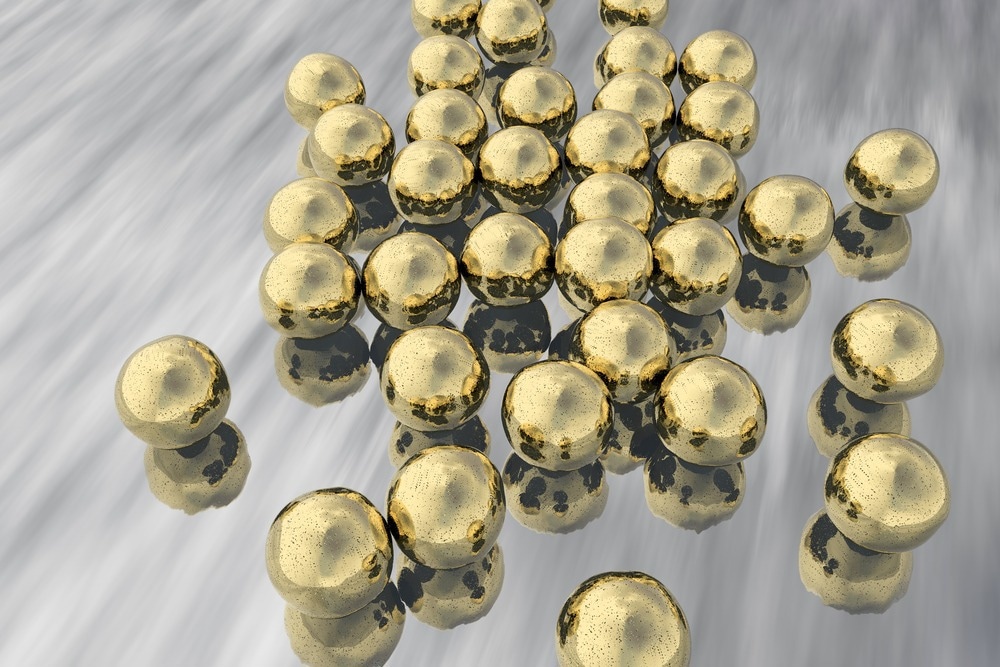Colorimetric biosensors show promising potential for detecting analytes such as drugs, and toxic pollutants due to their efficient fabrication, rapid detection, high selectivity and sensitivity.

Image Credit: Kateryna Kon/Shutterstock.com
What is Colorimetry?
The basic working principle of colorimetric sensing is colorimetry, which is a visible change in color that results from a chemical interaction between the sensing/detecting material and the target analyte.
Combining nanotechnology with traditional colorimetry has enabled the fabrication of cost-effective nanomaterial-based colorimetric sensors with a remarkably low limit of detection (LOD). It has also enabled high accuracy for environmental management in real-time, medical diagnosis, and many other applications.
Lately, metal nanoparticles (NPs) have been used as sensing materials, which has increased the potential for developing novel colorimetric nano-sensors and shifted the focus of translational research in a new direction.
In particular, gold nanoparticles (AuNPs) have drawn significant attention and are employed extensively as sensing components due to their photophysical and physiochemical characteristics, availability, and affordability.
Why Are Gold Nanoparticles Used in Colorimetry?
One of the most widely utilized metals in colorimetry is gold (Au). When it comes to using gold nanoparticles (AuNPs) in sensing, their distinct physical, chemical, and optoelectronic characteristics, affordable cost, and sensing mechanisms make them suitable for achieving reliable results.
Gold nanoparticles of various sizes and forms can be easily made from Au (III) salts. Surface modification of AuNPs can be easily achieved with a variety of disulfide- or thiol- terminated organic ligands to increase the specificity of the target analyte by creating strong Au-S bonds.
Lastly, AuNPs have extraordinary optoelectronic attributes, mainly localized surface plasmon resonance (LSPR), which produces a significant absorption band inside the visible region. The dielectric characteristics of the surrounding environment as well as the proximity of neighboring nanoparticles, in addition to the size and form of the nanoparticles, affect this SPR band.
Gold nanoparticles-dependent colorimetric sensing is based upon this last characteristic. Thus, analyte-triggered aggregation of AuNPs occurs when a considerable bathochromic shift of the SPR band (from 520 to 650 nm), as well as a change in the color of the colloidal suspension from red (dispersed) to purple or blue (aggregated), takes place because of inter-particle surface Plasmon coupling (figure 8). Furthermore, AuNPs have exceptionally elevated molar extinction coefficients (ε) (about 108–109 M-1 cm -1 for AuNPs with diameters equivalent to 10-50 nm), giving AuNP-based colorimetric sensing approaches a high sensitivity.
Recent Colorimetric Studies based on Gold Nanoparticles
In the last few years, there have been a lot of research reports showcasing the use of gold nanoparticles for colorimetric sensing, proving the successful application of AuNPs as sensing element.
A recent study published in the journal Talanta reported the fabrication of colorimetric sensors using gold nanoparticles to detect sequences of the ribonucleic acid (RNA)-dependent RNA polymerase (RdRp), spike (S), and envelope (E) genes of the severe acute respiratory syndrome coronavirus 2 (SARS-CoV-2). Using several Molecular Beacons (MB) oligonucleotides, the researchers designed and synthesized citrate-stabilized AuNPs in the study after figuring out how many oligonucleotides could be conjugated to the AuNPs.
The modified citrate-AuNPs were used as the sensing element in the developed sensor and proved to have high selectivity and specificity towards specific SARS targets, regardless of other microorganisms present in the sample due to analyte-induced AuNP aggregation. The nanosensor enabled the identification of SARS-CoV-2 sequences by the unaided eye in 15 minutes and was shown to be durable for months without any discernible decline in its activity.
In another study, a colorimetric technique using gold nanoparticles (AuNPs), ceria nanoparticles (CeO2), and single-stranded DNA (ssDNA) was created to measure glucose (Glu) and hydrogen peroxide (H2O2) in sodium chloride (NaCl) solutions. The aqueous solution's color changed noticeably from purple to red when H2O2 was present. This was due to the release of ssDNA that had been adsorbed to the surface of CeO2-AuNPs.
Since H2O2 can be produced in the process of glucose oxidation by glucose oxidase (GOx), the approach was also employed to detect glucose. The limits of detection for glucose and H2O2 with this colorimetric sensor device were found to be approximately 3.01µM and 0.21µM, respectively. Additionally, the suggested technique was effective in measuring the levels of glucose in blood-serum samples.
These studies show the value of AuNPs and demonstrate the application of gold nanoparticles in colorimetric sensing.
Conclusion
In conclusion, developing an easy and practical nanosensor for detecting biological and chemical substances is essential. AuNP-based colorimetric sensing is promising compared to other sensing techniques because the complete colorimetric assay is conducted in a simple manner with a color change (analyte-induced aggregation) that can be observed directly without sophisticated equipment and skilled personnel.
Thus, these sensing approaches greatly shorten detection time, simplify operating processes, and lower colorimetric assay and production costs.
References and Further Reading
Negi, D. P. S. (2022). Recent developments in the colorimetric sensing of biological molecules using gold nanoparticles-based probes. Talanta Open, 6, 100122. https://doi.org/10.1016/J.TALO.2022.100122
Rodríguez Díaz, C., et al (2022). Development of colorimetric sensors based on gold nanoparticles for SARS-CoV-2 RdRp, E and S genes detection. Talanta, 243, 123393. https://doi.org/10.1016/J.TALANTA.2022.123393
Zheng, C., Wu, D., Wang, T., Xiao, J., & Yu, L. (2022). A Label-Free Colorimetric Assay Based on Gold Nanoparticles for the Detection of H2O2 and Glucose. Chemosensors, Vol. 10, Page 100, 10(3), 100. https://doi.org/10.3390/CHEMOSENSORS10030100
Chang, C. C., Chen, C. P., Wu, T. H., Yang, C. H., Lin, C. W., & Chen, C. Y. (2019). Gold Nanoparticle-Based Colorimetric Strategies for Chemical and Biological Sensing Applications. Nanomaterials, 9(6). https://doi.org/10.3390/NANO9060861
Gaviña, P., Parra, M., Gil, S., & M. Costero, A. (2019). Red or Blue? Gold Nanoparticles in Colorimetric Sensing. Gold Nanoparticles - Reaching New Heights. https://doi.org/10.5772/INTECHOPEN.80052
Disclaimer: The views expressed here are those of the author expressed in their private capacity and do not necessarily represent the views of AZoM.com Limited T/A AZoNetwork the owner and operator of this website. This disclaimer forms part of the Terms and conditions of use of this website.